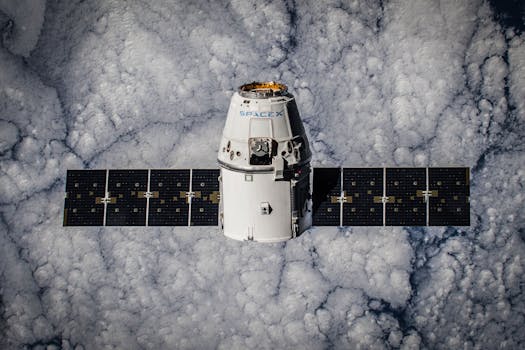The Future of Satellites: Revolutionizing Global Connectivity

The Future of Satellites: Revolutionizing Global Connectivity
The future of satellites is rapidly evolving, with advancements in space technology and increasing demand for global connectivity. Satellites have been a crucial part of modern communication, navigation, and weather forecasting systems for decades. However, the next generation of satellites is expected to play an even more significant role in shaping the future of global communication, commerce, and exploration.
Current State of Satellites
Satellites are artificial objects that orbit the Earth, transmitting and receiving signals to provide various services such as television broadcasting, internet connectivity, navigation, and weather forecasting. There are currently over 5,000 satellites in orbit, with more than 1,000 launched in the past year alone. The majority of these satellites are used for communication, navigation, and Earth observation purposes.
The current satellite industry is dominated by a few large players, including Intelsat, SES, and Eutelsat. However, the landscape is changing with the emergence of new companies such as SpaceX, Amazon’s Kuiper Systems, and OneWeb, which are launching constellations of small satellites to provide global internet connectivity.
Future Developments in Satellites
The future of satellites is expected to be shaped by several key trends, including the development of smaller, more affordable satellites, advancements in propulsion systems, and the increasing use of artificial intelligence and machine learning. One of the most significant developments is the emergence of satellite constellations, which involve launching multiple small satellites into orbit to provide global coverage.
For example, SpaceX’s Starlink constellation aims to provide high-speed internet connectivity to remote and underserved communities around the world. The company has already launched over 1,000 satellites and plans to launch thousands more in the coming years. Similarly, Amazon’s Kuiper Systems is planning to launch a constellation of 3,236 satellites to provide broadband internet services.
Another significant trend is the development of reusable launch vehicles, which are expected to significantly reduce the cost of launching satellites into orbit. Companies such as SpaceX and Blue Origin are leading the charge in this area, with reusable rockets that can launch payloads into space and then return to Earth for refurbishment and reuse.
Applications of Satellites
Satellites have a wide range of applications, including communication, navigation, Earth observation, and weather forecasting. One of the most significant applications of satellites is in the provision of global connectivity, particularly in remote and underserved communities. Satellites can provide internet access, voice and data communications, and other services to areas where traditional infrastructure is lacking.
Satellites are also used for navigation purposes, providing location information and timing signals to GPS receivers on the ground. This is critical for a wide range of applications, including aviation, maritime, and land transportation. Additionally, satellites are used for Earth observation, providing valuable data on weather patterns, climate change, and natural disasters.
Satellites are also used for weather forecasting, providing critical data on atmospheric conditions, temperature, and precipitation patterns. This information is used to predict weather patterns, issue warnings for severe weather events, and provide critical information for agriculture, aviation, and other industries.
Impact on Industries
The future of satellites is expected to have a significant impact on various industries, including telecommunications, aviation, maritime, and agriculture. The increasing availability of global connectivity is expected to drive growth in e-commerce, remote work, and digital entertainment. Additionally, the use of satellites for navigation and Earth observation is expected to improve efficiency and safety in transportation and logistics.
The satellite industry is also expected to create new job opportunities in fields such as engineering, manufacturing, and operations. Furthermore, the development of new satellite technologies is expected to drive innovation and entrepreneurship, particularly in the areas of space technology and data analytics.




